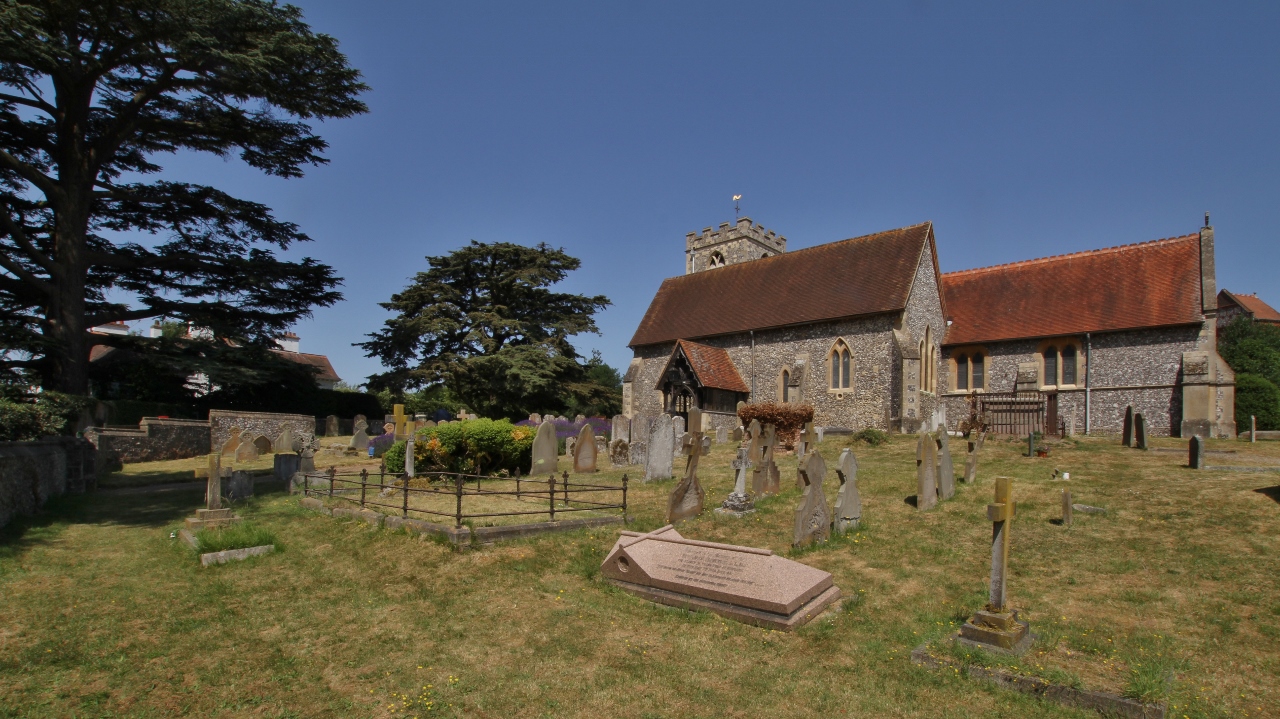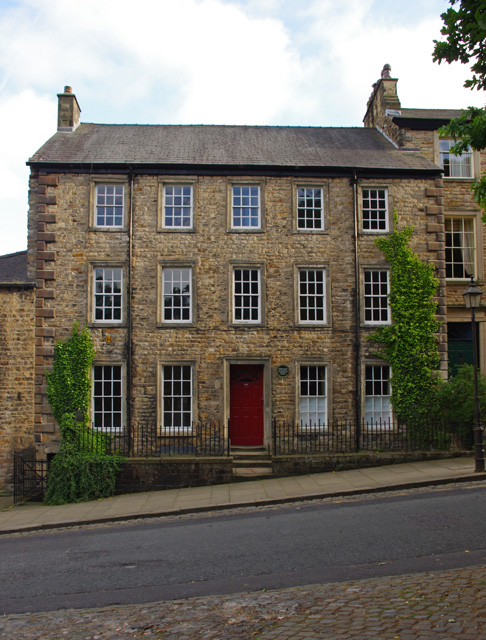|
Keswick School Of Industrial Art
Keswick School of Industrial Art (KSIA) was founded in 1884 by Canon Hardwicke Rawnsley and his wife Edith as an evening class in woodwork and repoussé metalwork at the Crosthwaite Parish Rooms, in Keswick, Cumbria.Bott, p. 117 The enterprise, designed to alleviate unemployment, prospered, and within ten years more than a hundred men were attending classes. A new building was erected for the school at a nearby site. The school closed in 1984 and the building became a restaurant. History Rawnsley was the vicar of Crosthwaite, at the edge of Keswick, from 1883 to 1917. He was one of the three co-founders of the National Trust and was a prominent figure in philanthropic enterprises in the area, helping to establish a grammar school, a hospital and a farm school. Inspired by the precepts of John Ruskin, Rawnsley and his wife set up free evening classes in the parish rooms, beginning in November 1884, to teach metalwork and wood carving under the supervision of a London professio ... [...More Info...] [...Related Items...] OR: [Wikipedia] [Google] [Baidu] |
Hardwicke Rawnsley
Hardwicke Drummond Rawnsley (29 September 1851 – 28 May 1920) was an Anglican priest, poet, local politician and conservationist. He became nationally and internationally known as one of the three founders of the National Trust for Places of Historic Interest or Natural Beauty in the 1890s. Rawnsley was descended from a line of Church of England vicars, and after briefly considering medicine as a career he graduated from University of Oxford, Oxford and took holy orders. In the mid-1870s he worked with the urban poor in London and Bristol, before being appointed in 1877 to a rural parish in Westmorland in the English Lake District. He soon became a vigorous activist in the campaign to preserve the region from excessive industrial development. In 1883 Rawnsley was appointed Vicar of St Kentigern's Church, Crosthwaite, Crosthwaite, Cumberland, in the north of the Lake District. He remained in the post for 34 years, becoming known locally and nationally for his energetic efforts ... [...More Info...] [...Related Items...] OR: [Wikipedia] [Google] [Baidu] |
Keswick Museum And Art Gallery
Keswick Museum is a local museum based in Keswick in the English Lake District, which exhibits aspects of the landscape, history and culture of the area. History The collection was established as the Keswick Museum of Local and Natural History, a creation of the Keswick Literary and Scientific Society, in the Moot Hall, in 1873. An important item in the original collection at the Moot Hall was a three-dimensional model of the Lake District, measuring 12 feet by 9 feet, made by Joseph and James Flintoft in 1837. The collection moved to purpose-built facilities, in Fitz Park, constructed as a memorial to the Hewetson brothers, distinguished Keswick benefactors, in 1897. Cannon Hardwicke Rawnsley, one of founders of the National Trust, attended the opening of the art gallery at the museum, in 1906. The Fitz Park Trust got into financial difficulties and the collection was rescued by Allerdale Council in April 1994. Then, in February 2007, Keswick Museum and Art Gallery Managem ... [...More Info...] [...Related Items...] OR: [Wikipedia] [Google] [Baidu] |
Educational Institutions Disestablished In 1984
Education is a purposeful activity directed at achieving certain aims, such as transmitting knowledge or fostering skills and character traits. These aims may include the development of understanding, rationality, kindness, and honesty. Various researchers emphasize the role of critical thinking in order to distinguish education from indoctrination. Some theorists require that education results in an improvement of the student while others prefer a value-neutral definition of the term. In a slightly different sense, education may also refer, not to the process, but to the product of this process: the mental states and dispositions possessed by educated people. Education originated as the transmission of cultural heritage from one generation to the next. Today, educational goals increasingly encompass new ideas such as the liberation of learners, skills needed for modern society, empathy, and complex vocational skills. Types of education are commonly divided into formal ... [...More Info...] [...Related Items...] OR: [Wikipedia] [Google] [Baidu] |
Educational Institutions Established In 1884
Education is a purposeful activity directed at achieving certain aims, such as transmitting knowledge or fostering skills and character traits. These aims may include the development of understanding, rationality, kindness, and honesty. Various researchers emphasize the role of critical thinking in order to distinguish education from indoctrination. Some theorists require that education results in an improvement of the student while others prefer a value-neutral definition of the term. In a slightly different sense, education may also refer, not to the process, but to the product of this process: the mental states and dispositions possessed by educated people. Education originated as the transmission of cultural heritage from one generation to the next. Today, educational goals increasingly encompass new ideas such as the liberation of learners, skills needed for modern society, empathy, and complex vocational skills. Types of education are commonly divided into formal, ... [...More Info...] [...Related Items...] OR: [Wikipedia] [Google] [Baidu] |
Education In Cumbria
Education is a purposeful activity directed at achieving certain aims, such as transmitting knowledge or fostering skills and character traits. These aims may include the development of understanding, rationality, kindness, and honesty. Various researchers emphasize the role of critical thinking in order to distinguish education from indoctrination. Some theorists require that education results in an improvement of the student while others prefer a value-neutral definition of the term. In a slightly different sense, education may also refer, not to the process, but to the product of this process: the mental states and dispositions possessed by educated people. Education originated as the transmission of cultural heritage from one generation to the next. Today, educational goals increasingly encompass new ideas such as the liberation of learners, skills needed for modern society, empathy, and complex vocational skills. Types of education are commonly divided into formal ... [...More Info...] [...Related Items...] OR: [Wikipedia] [Google] [Baidu] |
Art Schools In England
Art is a diverse range of human activity, and resulting product, that involves creative or imaginative talent expressive of technical proficiency, beauty, emotional power, or conceptual ideas. There is no generally agreed definition of what constitutes art, and its interpretation has varied greatly throughout history and across cultures. In the Western tradition, the three classical branches of visual art are painting, sculpture, and architecture. Theatre, dance, and other performing arts, as well as literature, music, film and other media such as interactive media, are included in a broader definition of the arts. Until the 17th century, ''art'' referred to any skill or mastery and was not differentiated from crafts or sciences. In modern usage after the 17th century, where aesthetic considerations are paramount, the fine arts are separated and distinguished from acquired skills in general, such as the decorative or applied arts. The nature of art and related concepts, suc ... [...More Info...] [...Related Items...] OR: [Wikipedia] [Google] [Baidu] |
Newlyn Copper
Newlyn Copper was a class of arts and crafts copperware originating in Newlyn in Cornwall. History In the late 19th century the fishing industry in Cornwall was becoming unreliable as a source of income; bad weather and seasonal fluctuations brought enforced periods of inactivity. It was decided that an alternative means of employment could be gained by training the unemployed fishermen to produce items in copper. John Drew Mackenzie, an artist who settled at Newlyn was a key figure in setting up the Newlyn Industrial Class, assisted by the benefactor and local Member of Parliament, Thomas Bedford Bolitho, and artists Reginald Dick, T. C. Gotch, Perry Craft and John Pearson. After some early experiments, the class specialised in repoussé copper work and produced a wide range of domestic and decorative items. The school remained active for about thirty years after its establishment in 1890. Other known artists who produced work in the Newlyn style included: Herbert ... [...More Info...] [...Related Items...] OR: [Wikipedia] [Google] [Baidu] |
List Of Non-ecclesiastical Works By Austin And Paley (1895–1914)
Sharpe, Paley and Austin#Austin and Paley, Austin and Paley was the title of a practice of architects in Lancaster, Lancashire, Lancaster, Lancashire, England, in the late 19th and early 20th centuries. The practice had been founded in 1836 by Edmund Sharpe. The architects during the period covered by this list are Hubert Austin and Henry Paley. Henry Paley had joined the practice as a partner in 1886 when his father, E. G. Paley, was Austin's partner; the practice then became known as Paley, Austin and Paley. E. G. Paley died in 1895, and the practice continued under the title of Austin and Paley. Austin's son joined the practice as a partner in 1914. This list covers the non-church (building), ecclesiastical works executed by the practice during the partnership of Hubert Austin and Henry Paley between 1895 and 1914. These works include additions made to houses, schools and hospitals, a new educational establishment, an orphanage, an office and shop, a hotel, and t ... [...More Info...] [...Related Items...] OR: [Wikipedia] [Google] [Baidu] |
Herbert Maryon
Herbert James Maryon (9 March 187414 July 1965) was an English sculptor, conservator, goldsmith, archaeologist and authority on ancient metalwork. Maryon practiced and taught sculpture until retiring in 1939, then worked as a conservator with the British Museum from 1944 to 1961. He is best known for his work on the Sutton Hoo ship-burial, which led to his appointment as an Officer of the Order of the British Empire. By the time of his mid-twenties Maryon attended three art schools, apprenticed in silversmithing with C. R. Ashbee and worked in Henry Wilson's workshop. From 1900 to 1904 he served as the director of the Keswick School of Industrial Art, where he designed numerous Arts and Crafts works. After moving to the University of Reading and then Durham University, he taught sculpture, metalwork, modelling, casting, and anatomy until 1939. He also designed the University of Reading War Memorial, among other commissions. Maryon published two books while teaching, includi ... [...More Info...] [...Related Items...] OR: [Wikipedia] [Google] [Baidu] |
Paley, Austin And Paley
Sharpe, Paley and Austin are the surnames of architects who practised in Lancaster, Lancashire, England, between 1835 and 1946, working either alone or in partnership. The full names of the principals in their practice, which went under various names during its life, are Edmund Sharpe (1809–77); Edward Graham Paley (1823–95), who practised as E. G. Paley; Hubert James Austin (1841–1915); Henry Anderson Paley (1859–1946), son of Edward, usually known as Harry Paley; and, for a very brief period, Geoffrey Langshaw Austin (1884–1971), son of Hubert. The firm's commissions were mainly for buildings in Lancashire and what is now Cumbria, but also in Yorkshire, Cheshire, the West Midlands, North Wales, and Hertfordshire. The practice specialised in work on churches; the design of new churches, restoring older churches, and making additions or alterations. They also designed country houses, and made alterations to existing houses. Almost all their churches ... [...More Info...] [...Related Items...] OR: [Wikipedia] [Google] [Baidu] |







